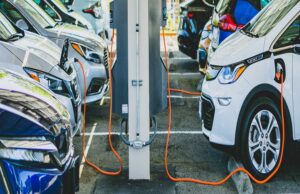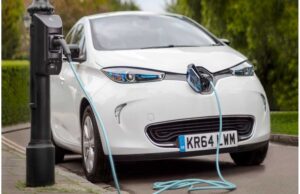How do electric cars work?
The concept of the electric vehicle is very simple: electricity is stored in a battery – this electricity is used to power the car’s engine and to operate the starter. Since the electric car needs a battery to operate, one of the main differences for the driver of an electric vehicle is frequent charging of his car.
“How do I charge my car?
The answer is simple: there is a growing network of public charging stations accessible throughout Europe, but also the possibility of charging your vehicle at home or at work . With an ever-increasing battery life and a proliferation of charging points, electric vehicles can now compare to internal combustion vehicles in terms of distance and in terms of model choice.
How does the maintenance of an electric car differ from a traditional car?
When it comes to vehicle maintenance, there are significant differences between electric cars and their traditional counterparts.
Simplicity . When considering the pros and cons of electric cars, their simplicity is a big plus. While a traditional car has a large number of parts that need regular maintenance (including oil, cooling system, spark plugs, fuel pumps), most electric vehicles only have three main elements to consider: the car engine, the inverter and the charger inside the vehicle (the element requiring the most maintenance).
Costs . With fewer parts to maintain, the maintenance cost can also be much more advantageous. This will obviously depend on the car model. Indeed, the less popular models on the market can cost more for their spare parts.
Braking system known as “regenerative” . Thanks to the “regenerative” braking system, the maintenance of the brakes of an electric vehicle is 50% less restrictive compared to the maintenance needs of a conventional car.
Fewer fluids . Electric cars also have fewer fluids to maintain compared to regular cars and (other than the fluids mentioned below) these are usually sealed inside the car’s infrastructure and not accessible.
Most in terms of maintenance . The obvious reasons for the driver to maintain his traditional vehicle regularly are firstly to avoid emergency repair costs, and secondly, to avoid encountering problems due to lack of maintenance. For EV drivers, there are additional incentives, including a credit system that encourages the exchange of an old battery for a new one
When comparing the two types of cars, there are always key differences between the two.
The brake pads . As with a traditional vehicle, it is important to regularly maintain the brake pads of an EV. However, thanks to so-called “regenerative braking”, this is usually much easier to do. Regenerative braking helps prevent the loss of energy that occurs when a car brakes regularly. When the brake pedal is depressed in an electric car, the motor reverses, which has the effect of slowing down the wheels of the car, at the same time as generating energy which in turn is transferred to the batteries of the car. car and store for later use. This system also works for hybrid cars.
Windscreen wipers . Electric vehicles have standard windscreen wipers and should therefore be maintained in the same way as traditional cars. In general, it is advisable to replace the wiper blades twice a year – before the winter season begins and the same for the summer months. In the event that these wear out prematurely, it is also advisable to replace them as soon as possible.
Fluids . EVs only have three key fluids that need to be changed regularly: coolant, brake fluid and windshield washer fluid. This is the case with most green cars, but some are different – for example, the Tesla Model S gearbox contains transmission fluid which also needs to be replaced regularly. Coolant is necessary for the EV’s thermal management system and will need to be changed frequently.
The battery . The VE battery wears out over time and eventually needs to be replaced. However, this is not “regular maintenance”. This battery can last at least a decade. In fact, many manufacturers offer battery component warranties of 8 to 10 years or 160,000 to 240,000 kilometers.
While both types of cars require regular maintenance, electric cars are generally simpler, less hassle, and generally easier to maintain. By purchasing an electric vehicle, it is therefore possible to reduce the burden of traditional maintenance while driving a green vehicle.



